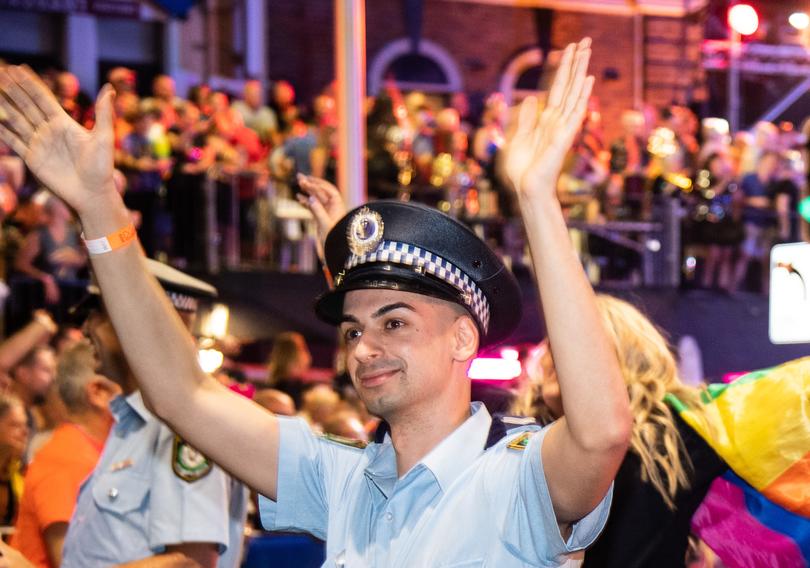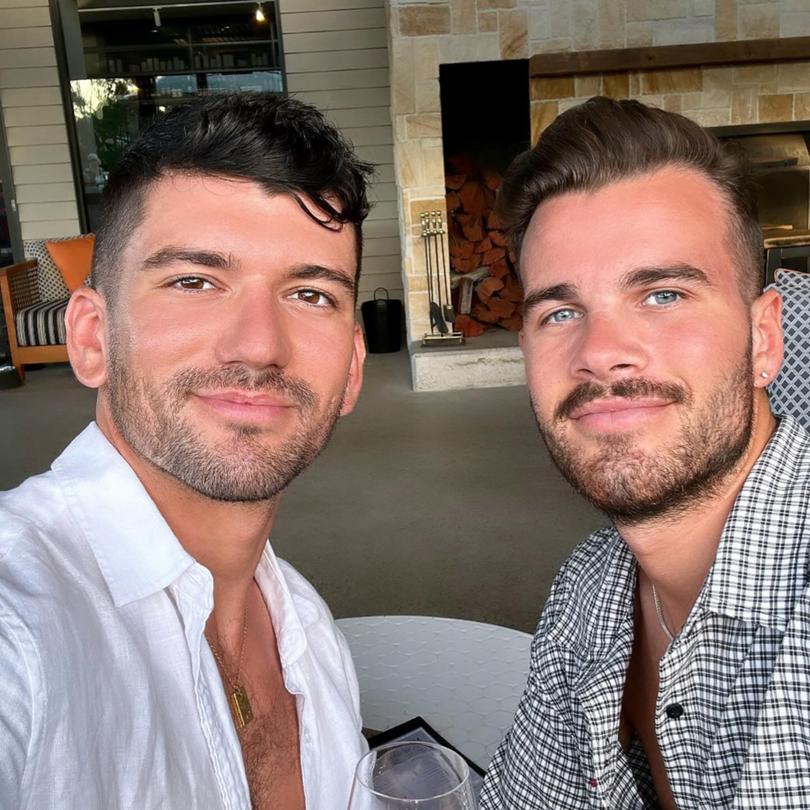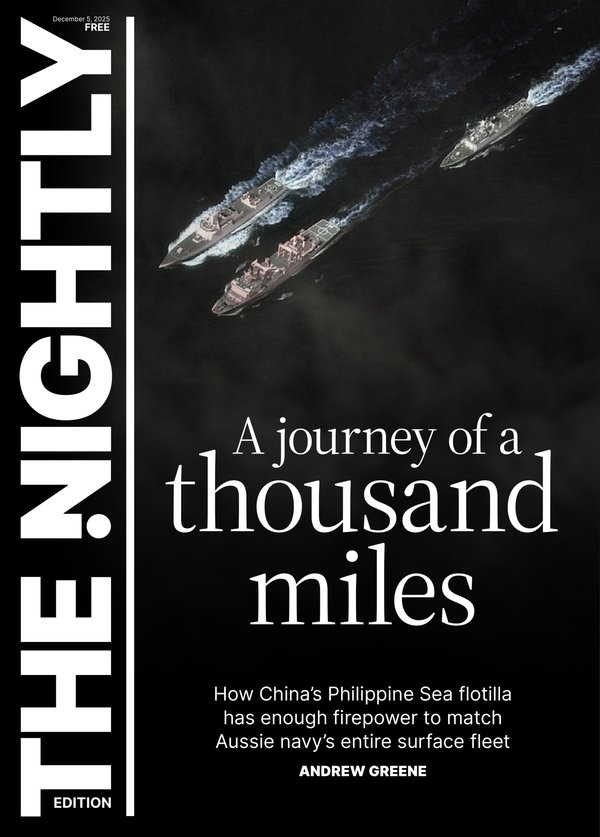How Jesse Baird and Luke Davies’ alleged murders have reignited event’s age-old tensions with NSW Police

Around 250,000 people, some waving rainbow flags and others adorned with glitter, are expected to line Oxford Street and crowd the inner Sydney suburb of Darlinghurst and surrounds on Saturday for the annual gay and lesbian mardi gras.
But apart from the traditional rainbows this year’s celebrations will also be coloured by grief and anger after the alleged murder of television presenter Jesse Baird and his partner Luke Davies, a Qantas employee, by a serving police officer.
NSW Police constable Beau Lamarre-Condon is accused of using his police issued Glock pistol to kill the couple, aged 26 and 29, at Baird’s terrace home in Paddington in the Eastern Suburbs on February 19.
Sign up to The Nightly's newsletters.
Get the first look at the digital newspaper, curated daily stories and breaking headlines delivered to your inbox.
By continuing you agree to our Terms and Privacy Policy.There’s been no public evidence that Const. Lamarre-Condon, a gay man who reportedly had an online escort profile, allegedly targeted Baird because of a hatred of gays.
Early indications are instead that Const. Lamarre-Condon, an aspiring actor devoted to celebrity culture, had some kind of obsession with Baird and may have once broken into his home.
But the very fact that a police officer has killed two gay men in their 20s - as well as perceived failings around the handling of the case - has roused dormant anger over historical violence committed by police towards the LGBTQIA+ community.
Saturday will be as much a memorial for Baird and Davies, two young men whose lives were cut tragically short, as it will be about glitter, floats and corporate sponsorship.

NSW Police will march in the 46th annual Sydney Gay and Lesbian Mardi Gras dressed in civilian clothes and without weapons after the Mardi Gras board this week initially withdrew their invitation to attend, prompting days of negotiation between the event’s board and police.
After police inclusion in the march was confirmed on Wednesday, Network 10 journalist Narelda Jacobs, a colleague of Baird, said organisations had to prove they were inclusive before they could “march under the rainbow”.
“Whether marching in uniform or not, the onus is on NSW Police to demonstrate their remorse, deep reflection and systemic change so we can all feel included in their protection and community service,” she said on Instagram.
Indeed, police violence is part of the origin story of the Sydney Gay and Lesbian Mardi Gras.
In 1978 a group of gay and lesbian protesters participated in the first Mardi Gras by marching on Oxford Street before they were violently arrested by NSW Police.
The Sydney Morning Herald then published the names, addresses and occupations of the marchers the next morning, causing some of the group, subsequently known as the 78ers, to lose employment while initially sentencing all to public infamy and shame.
However, the brutality of arrests drew national attention and, conversely, helped establish the Sydney Gay and Lesbian Mardi Gras as the nation’s most prominent queer event.
NSW Police apologised in 2016 and 2018 to the 78ers while the SMH apologised in 2016.
A photo of Const. Lamarre-Condon dressed in police uniform marching in the Mardi Gras parade in 2020 has emerged since the alleged murders, reigniting decades-old tensions.
Pride History Group President Dr Shirleene Robinson confirmed there was a legacy of historic anger towards police around violent arrests made at the first Mardi Gras parade in 1978 as well as inadequate responses to hate crimes and issues in contemporary policing, such as the use of sniffer dogs.
“I do think there’s a particularly raw context this year with a lot of people feeling very strong emotions after the loss of two very beloved members of the community,” she said.
“I think there is also that larger context of the role of police in failing to address historic hate crimes and other issues.”
Dr Robinson said the best case scenario was that NSW Police continued to make concrete efforts to improve the relationship with the LGBTIQA+ community.
NSW Police Commissioner Karen Webb last week apologised over police handling of gay hate crimes over a period spanning 40 years after a Special Commission of Inquiry led by NSW Supreme Court Justice John Sackar found officers had been “indifferent, negligent, dismissive or hostile”.

A damning final report released by the inquiry in December last year found there had been 25 deaths between 1970 and 2010 where there was reason to suspect LGBTQ bias was a factor.
Historian Graham Willette said police violence towards gay men in Sydney predated the 78e.rs. Going back to at least the 1960s, officers had beaten, robbed or stolen from gay men and lesbian women, he said.
“Darlinghurst was notorious,” said Mr Willette, who specialises in the history of queer Australia.
Mr Willette said police marching in the Mardi Gras parade had always been controversial due to the violent treatment of the 78ers but the alleged murders of Baird and Davies had touched a still-raw nerve.
“They’re (Baird and Davies) not the first gay people to be murdered but there’s something about this story that really moved people all over the place,” he said.
“Maybe because one was a journalist, maybe because they were young and healthy.”
Consensual sex between men was decriminalised in NSW in 1984 while sexual acts between women was never officially criminalised in the state.
National Museum of Australia senior curator Craig Middleton said from 1979 the Sydney Gay and Lesbian Mardi Gras celebrations began to reflect contemporary social movements, such as the introduction of the Dykes on Bikes in the 1980s following the rise of the women’s liberation movement.
Mr Middleton said NSW Police began marching in the Mardi Gras parade in the late 1990s as homosexuality became more mainstream and the growing annual event began attracting an increasing number of heterosexual spectators.
“If you really dig deeper, these aspects of human lived experience and cultural change over time are not only embedded in the event but are kind of connected to this event,” he said.
“Which has of course become bigger over the years not only because of the community but because of the response of mainstream Australia.”
The 46th Sydney Gay and Lesbian Mardi Gras will attract more than 30,000 people to Sydney and inject around $35 million into the local economy, according to Destination NSW figures.
Corporate sponsors include American Express, Coles, Optus and Qantas, for whom Davies worked as a flight attendant.
The airline will this year put Davies’ name on their official float. A community vigil for Baird and Davies will be held at Green Park in Darlinghurst on Friday.

This week Police Association of NSW president Kevin Morton said every single police officer in the state was appalled by the alleged murders but said police marching in the parade symbolised that officers served and protected the LGBTQIA+ community.
“It is disappointing that the alleged actions of one individual could potentially impact what has been 20 years of relationship progression,” he said.
“Thousands of police officers work, day in and day out, to keep all communities safe from the scourge of domestic violence.”
A protest against police marching organised by activist group Pride in Protest will take place on Friday night in Taylor Square.

